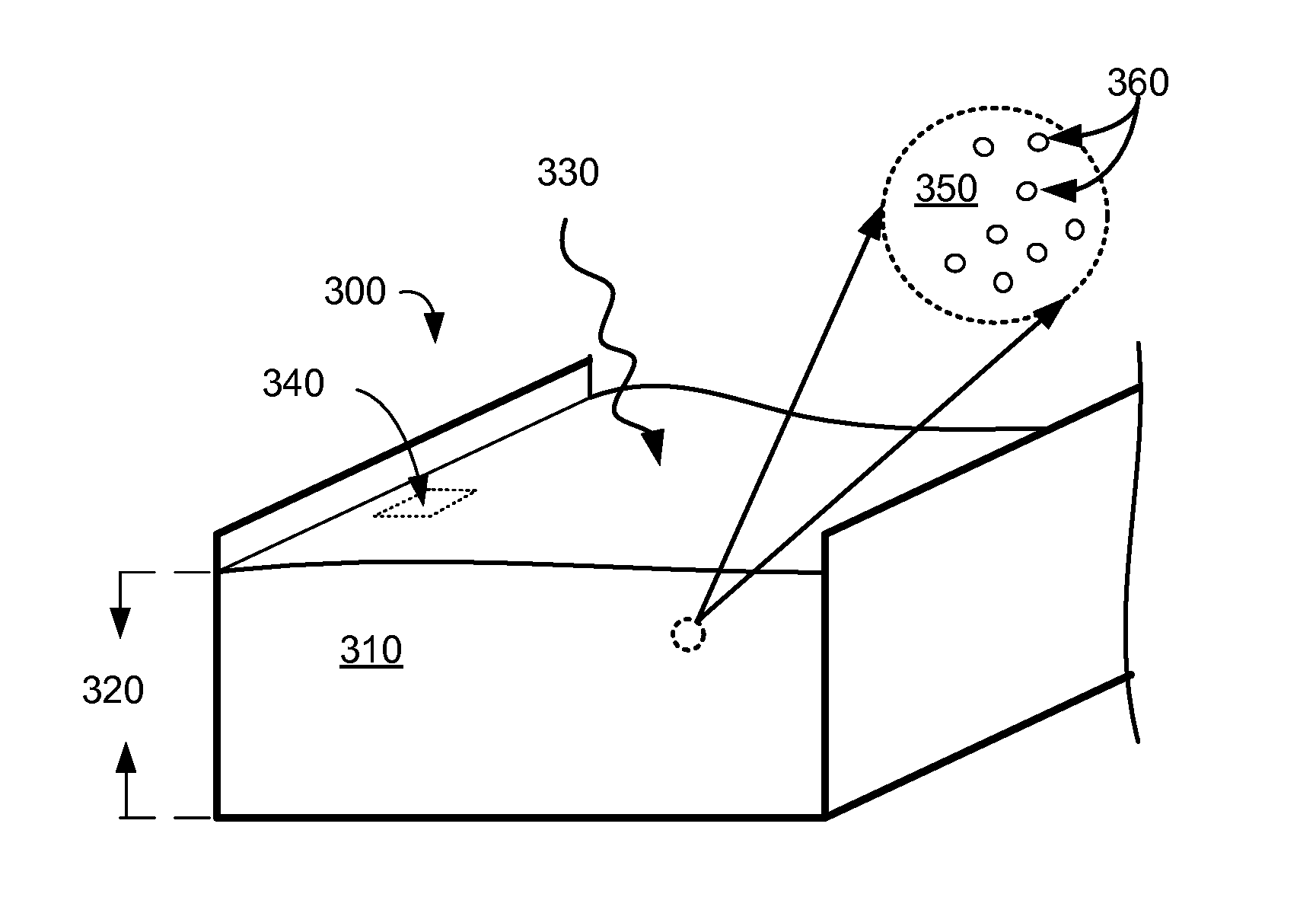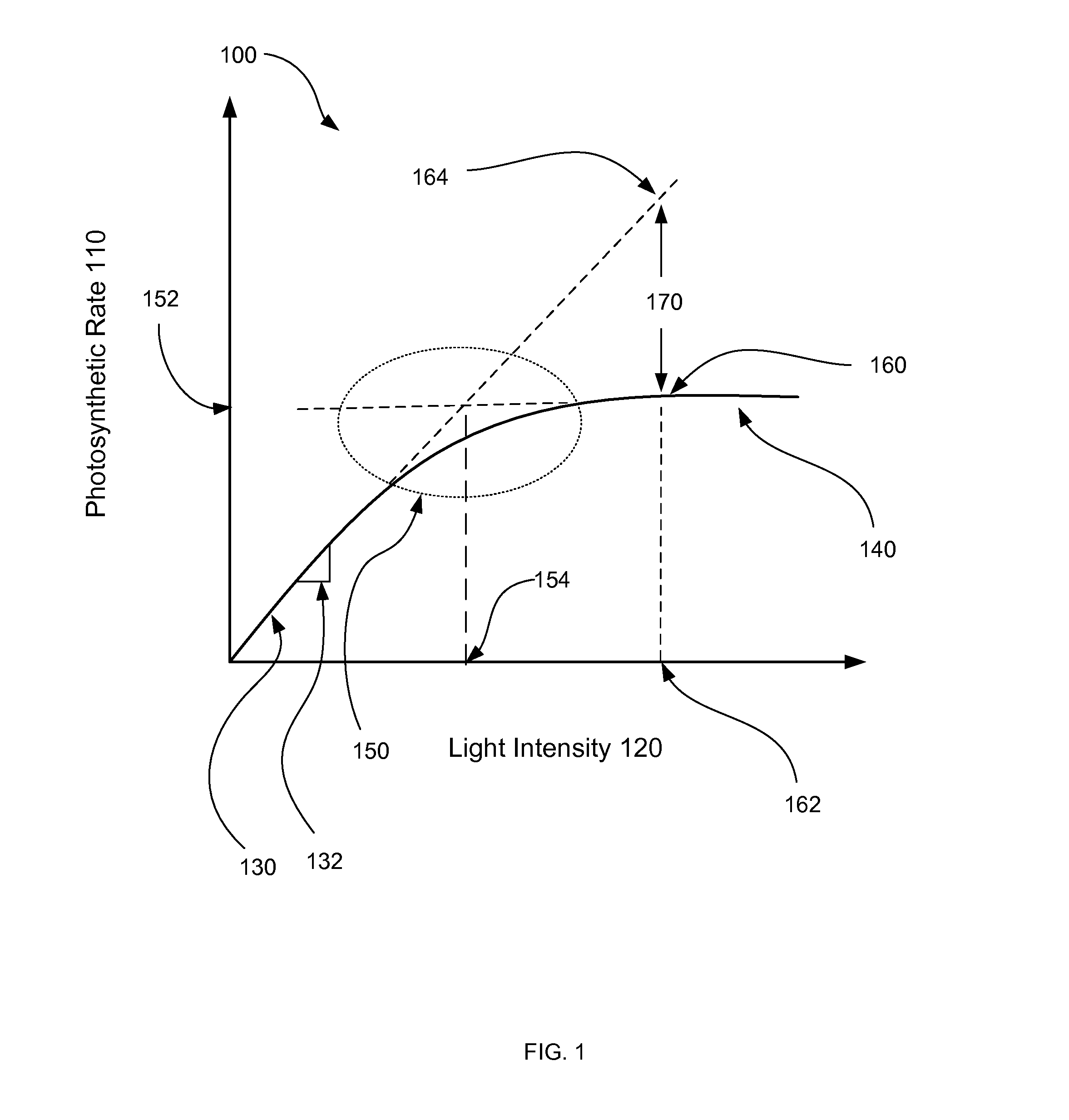Efficient Light Harvesting
- Summary
- Abstract
- Description
- Claims
- Application Information
AI Technical Summary
Benefits of technology
Problems solved by technology
Method used
Image
Examples
example 1
Random Mutagenesis Using ICR-191
[0066]Nannochloropsis sp. (e.g., Oceanica) were mutated and their properties measured. ICR-191 was prepared as a stock solution at a concentration of 1 mg / ml in 0.1N filter sterilized HCl. Cells were grown to mid-log phase and diluted to 106 cells / ml. To 20 ml of the diluted culture 40 μl of the ICR-191 stock was added. Flasks were placed on a shaker and illuminated at 50 μmol quanta m−2 s−1. Following 7 days of growth cells were washed twice with growth medium and then plated on agar plates. After 3-4 weeks of growth on plates relatively pale green colonies were selected, re-suspended in medium and then re-plated on fresh agar plates.
[0067]Fluorescence and Spectroscopic Analysis of Photosynthetic Function
[0068]Pulse amplitude modulated (PAM) fluorescence was recorded at the growth temperature of the culture using a Dual-PAM (Walz, Effeltrich, Germany). Samples were illuminated with visible light using the red LED built into the Dual-PAM. Samples were...
PUM
| Property | Measurement | Unit |
|---|---|---|
| Time | aaaaa | aaaaa |
| Color | aaaaa | aaaaa |
| Efficiency | aaaaa | aaaaa |
Abstract
Description
Claims
Application Information
 Login to View More
Login to View More - R&D
- Intellectual Property
- Life Sciences
- Materials
- Tech Scout
- Unparalleled Data Quality
- Higher Quality Content
- 60% Fewer Hallucinations
Browse by: Latest US Patents, China's latest patents, Technical Efficacy Thesaurus, Application Domain, Technology Topic, Popular Technical Reports.
© 2025 PatSnap. All rights reserved.Legal|Privacy policy|Modern Slavery Act Transparency Statement|Sitemap|About US| Contact US: help@patsnap.com



